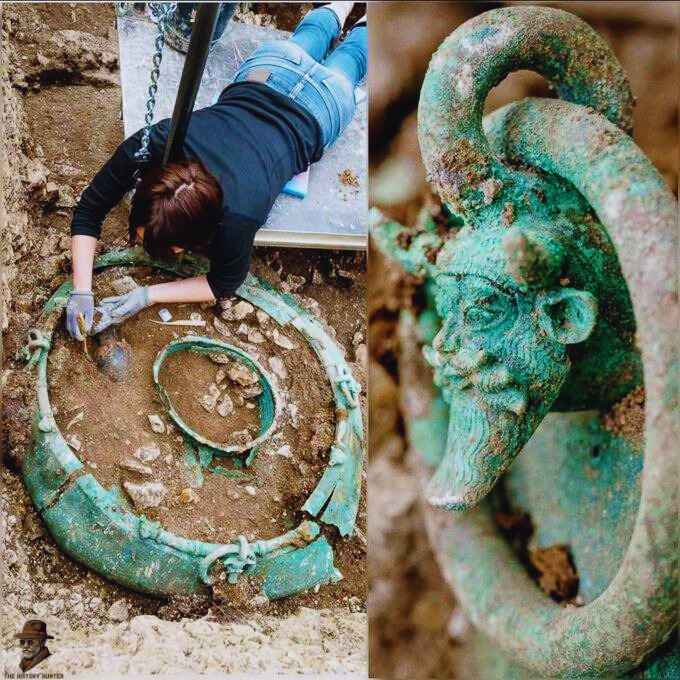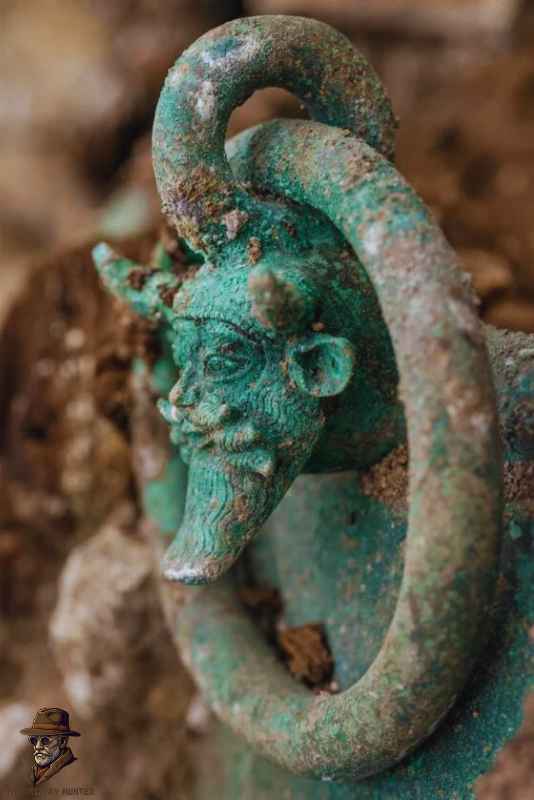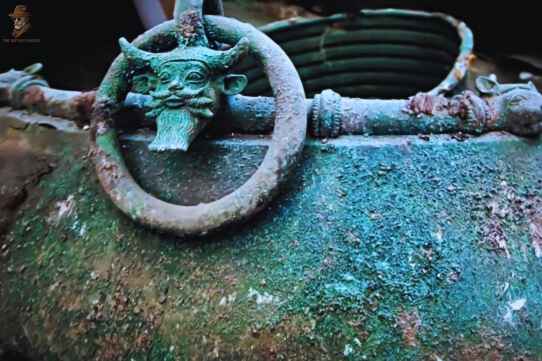In 2015, archaeologists uncovered a mind-blowing discovery in France’s Champagne region—the lavish tomb of a mysterious Celtic prince from the 5th century BC. Packed with priceless treasures, including a grand chariot, a massive copper cauldron adorned with a Greek god’s face, and a golden torc symbolizing royal power, this burial site offers a rare glimpse into the wealth and influence of the ancient Celtic elite. Who was this powerful ruler, and what secrets lie hidden in the treasures buried with him? The answers might change what we know about Europe’s ancient past.

In 2015, researchers made an amazing find in the Champagne region of France: the tomb of a Celtic prince from the 5th century BC, which was very well decorated. No markings or written records were found that directly identified the prince, so no one knows who he really was. The wealth and grandeur of the burial, on the other hand, show that he was very powerful and important.

This burial ground in Lavau had amazing items that gave us a rare look into the wealth and power of the Celtic elite in the past. The prince was buried with a chariot and gifts that included a bronze cauldron with lots of small decorations, Greek and Etruscan pottery, and a golden torc, which is one of the most famous symbols of Celtic royalty. A unique 5-foot-wide copper cauldron with the head of the Greek river god Achelous, which has big, horned ears, was one of the amazing things that were found. The Celts thought this pot, which is thought to have come from Greece or Etruria, was used for rituals or feasts where wine was drunk, which was a big deal for them.

These artifacts show that the Celts traded with many places, even countries in the Mediterranean. This shows how important they were in the early history of Europe. The tomb’s finding not only shows how people were buried and how well they were skilled at the time, but it also shows how advanced the Celtic tribes were during the Iron Age.
